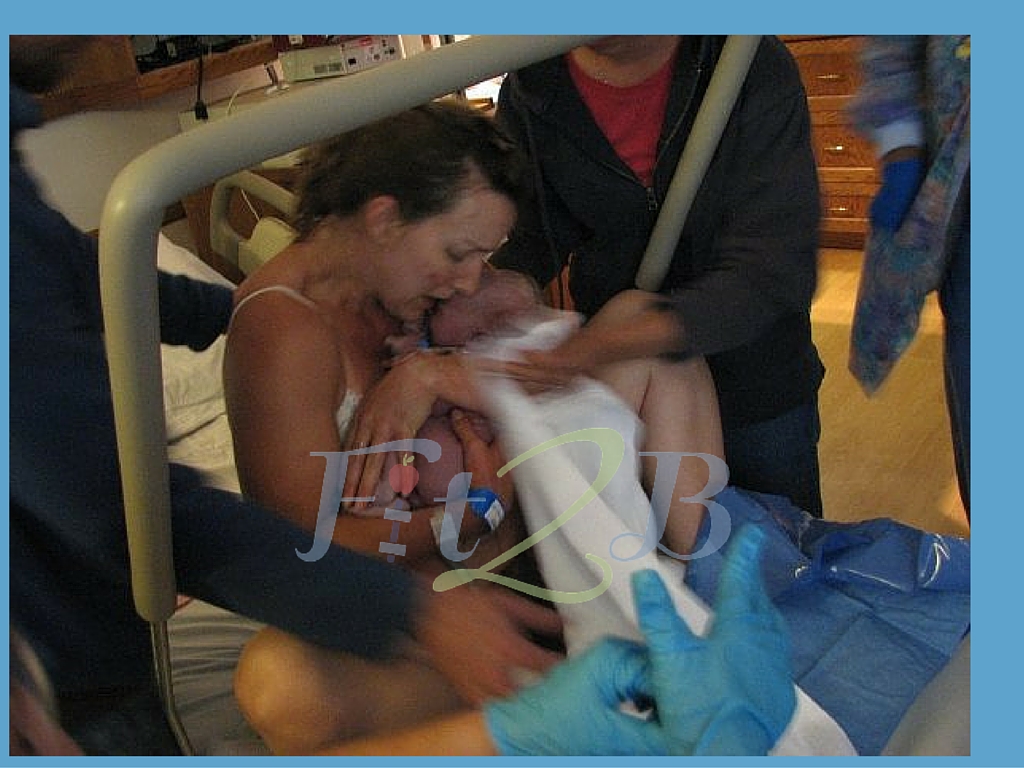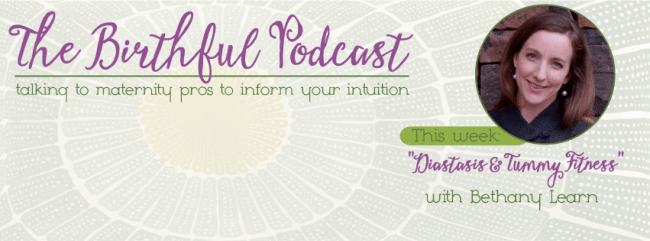Blog
Free Podcast: Diastasis & Tummy Fitness + My Births
It was a huge honor to be the special guest for The Birthful Podcast: Diastsis & Tummy Fitness with Adriana Lozada earlier this week. She said she chose me out of all the other experts she researched as possible guests because my program is the most comprehensive, evidence-based, straightforward, mama-friendly one she could find. The show covered a lot of ground, and Adriana was a delightful host. She got me pretty fired up a couple times!
As Adriana and I got to know each other and recorded the podcast, she asked me many questions about how the core is affected by birth and how we can help women recover in more gentle ways that don’t push them too fast.
What Adriana & I talked about during the podcast:
- What is a diastasis recti?
- Why diastasis are not just for moms.
- Should you be worried? Functional vs. dysfunctional diastasis
- Effects of a diastasis on the rest of your body
- Your chemistry and diastasis
- Are there things you can do to prevent it?
- Awakening your inner queen for better posture
- Why we love birth/exercise balls
- Prenatal yoga & diastasis: things to watch out for
- Smarter moving: no crunching, less sitting, more rolling
- What to expect during postpartum recovery
- Give yourself a hug: the debate on splinting (and benefits even if you don’t have a diastasis)
- Your emotions and diastasis
Of course, the whole discussion made me ponder and relive my own two birth experiences. So while you queue up the FREE podcast by clicking here or on the image above, and get ready to listen to me talk about how diastasis affects our pregnancy, birth and tummy fitness, here’s a little about my deliveries plus a couple pictures!
My Own Two Births
My daughter and son were both born in a hospital, the same one I was born in! Having read way too many things about natural birth and babies, plus my expertise with human anatomy and physiology AND being an auntie to 10 nieces and nephews already, I was highly educated and knew what I wanted.
So I typed up a 3 page single-spaced birth plan, and had my OB sign it. Plus I filed a copy at the hospital, not leaving the nurses desk until one of them signed it. It included my wishes to avoid pain medication, immediate vaccinations, immediate cord clamping, and too many gawkers in the room. I spelled out my desire for freedom to move, freedom to eat, freedom to wear my own clothes, and freedom to get as much skin-to-skin time in that first hour as possible. I asked to be provided with a doula-trained nurse, birthball, squat bar, bathtub, and shower. In exchanged, I allowed them to give me a heparin lock “just in case” and monitor me once an hour with permission for extra monitoring should the need arise. My clearly expressed plan was honored, and I felt empowered … except during transition when I felt out of control, but that’s normal!

During both of my births, I experienced a certain surreal moment – and I hear other women who have had unmedicated births speak of the same thing – where I just embraced what my body was doing. Not because I wanted to, but because the forward momentum of the process itself was pulling me along, and I realized that I was the contractions. I was the flex. I was the push. The pain was the fear, and when I pushed back against the fear, the pain also diminished.
Totally inside my own head, beyond the reach of everything happening around me, I discovered that I was curious to see where the pain would take me if I worked with it instead of against it, and that spark of curiosity and brief moment of “playing” with the pain unleashed a type of energy beyond what I’d ever felt as an athlete, trainer or instructor. It was on a different plane, a different level of existence, a different set of sensations that kept building and expanding as another tiny body found its way out of mine.
In the end, clothes didn’t matter. I gave birth to my daughter buck-naked, laying back for the final pushes after using the squatting bar for a few hours to work her down. My son’s birth was actually longer and harder on me since he didn’t want to move his fist from under his chin long enough to tuck his head and come out! We know this because I had an ultrasound at 2 weeks post-EDD, and his earliest pics all show him trying to get his hand back under his chin or in his mouth; he still likes to sleep with something tucked under his chin.
The heparin lock came in very handy AFTER my son was born very quickly due to fetal ejection reflex, giving me a 3rd degree tear and causing me to pass out briefly and start hemorrhaging right when he emerged. I had been in a supported squat with my arms around the necks of my best friend and husband, and my sister was up by my head. They said one moment they thought I was going to rip their heads off as I roared him out, and the next they thought I was dead as I went limp, and the next I was sitting up and grabbing my baby.

I clearly remember being shown the cords of both of my babies before they were cut so I would know they were no longer pulsing, and then a rush of happy pain meds and the tug of stitching. Most of all, the feel of my babies against my chest smelling perfect and warm and wet, like me and their daddy and themselves all at once.
Like all mothers, I could write a book about my births, but I’ll stop there. I’ve written more details down for myself, and I encourage you to do the same. Processing your births in writing is one more way to grow from them. As empowering as mine were, I still had to heal physically and emotionally from the experiences because they were hard. No birth is totally easy. No birth leaves us unchanged.
Perhaps that’s why I work so hard to help mamas recover their cores a bit faster: So much about birth we cannot control, but we can take charge of our recovery.
We can make all the plans, but still end up needing stitches and time to heal. So I try to minimize one aspect of the long list of things that must “go back to normal” after a baby comes by educating women about their cores, teaching them how to prevent wider diastasis rectus abdominus separations, informing them about their pelvic floor and how to avoid leaking and prolapse.
Visit our workout section for pregnant and postpartum women here!
Discover unlimited access to 100+ routines that help your core here!



Pingback: 30 Fitness Blogs in 30 Days from Fit2B